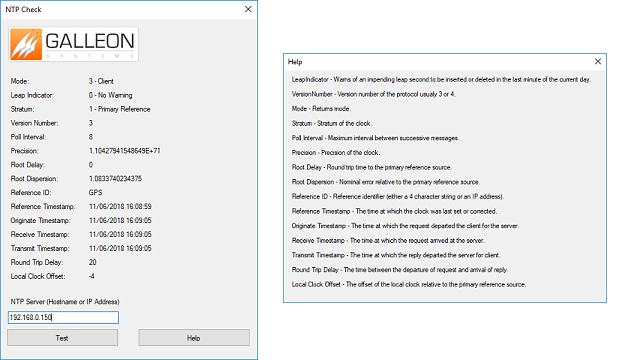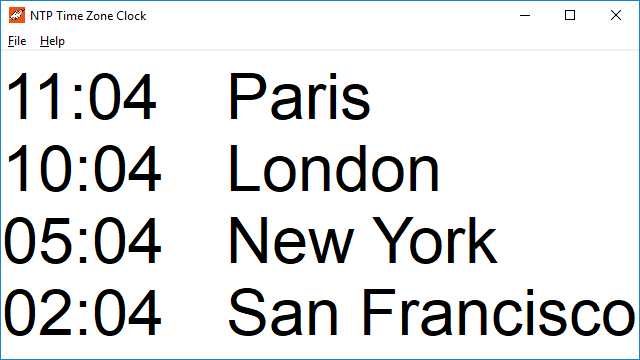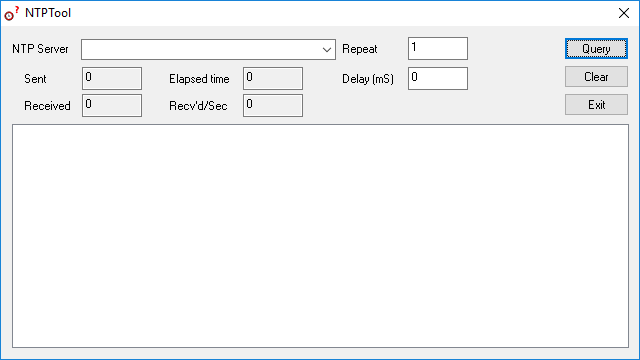
NTP Check
The Galleon Systems NTP Check Tool is used to send NTP version 3 Client requests to a time server.
The time servers response to this packet is decoded and provided in an easy to read format.
The NTP Server Check tool can be used to test synchronisation, check reachability and diagnose issues with the time server.
The NTP Server Check tool is portable and does not require installation so you can keep it on your USB drive.
The tool is provided free of charge.
Leap Indicator:
- 0: No leap second adjustment.
- 1: Last minute of the day has 61 seconds.
- 2: Last minute of the day has 59 seconds.
- 3: Clock is unsynchronized.
Version Number:
- NTP Version Number.
Mode:
- 0: Reserved.
- 1: Symmetric Active.
- 2: Symmetric Passive.
- 3: Client.
- 4: Server.
- 5: Broadcast.
- 6: NTP control message.
- 7: Private use.
Stratum:
- 0: Unspecified or invalid.
- 1: Primary reference.
- 2-15: Secondary reference.
- 16: Unsynchronized.
- 17-255: Reserved.
Poll Interval:
- The maximum interval between messages in seconds to the nearest power of two.
Precision:
- Precision of the local clock in seconds to the nearest power of two.
Root Delay:
- The total roundtrip delay to the primary reference source, in seconds with the fraction point between bits 15 and 16.
- Positive and negative values are valid.
Root Dispersion
- The maximum error relative to the primary reference source in seconds with the fraction point between bits 15 and 16.
- Only positive values greater than zero are valid.
Reference ID
- Used to identify the particular reference clock.
- In the case of stratum 0 (unspecified) or stratum 1 (primary reference), this is a four byte, left-justified, zero padded ASCII string.
- In the case of stratum 2 and greater (secondary reference) this is the IPv4 address of the primary reference host.
Examples of Reference ID's
- GPS: Global Position System
- GAL: Galileo Positioning System
- PPS: Generic pulse-per-second
- WWVB: (North America) Radio Time Signal at 60 kHz
- MSF: (United Kingdom) Radio Time Signal at 60 kHz
- DCF: (Germany) Radio Time Signal at 77.5 kHz
Reference Timestamp
- The local time at which the local clock was last set or corrected.
Originate Timestamp
- The local time when the client sent the request.
Receive Timestamp
- The local time when the request was received by the server.
Transmit Timestamp
- The local time when the reply was sent from the server.
Round Trip Delay
- The time between the departure of request and arrival of reply in miliseconds.
Local Clock Offset
- The offset of the local clock relative to the primary reference source in miliseconds.

NTP Check
Acts as a client to your NTP server. Sends time requests and provides a full report on the precision of your time server. Download for free.

NTP Time Zone Clock
Displays the local time of over 300 cities worldwide. Ideal for organisations with international staff and customers. Download for free.

NTP Server Tool
Free, downloadable tool acts as a client to your NTP server to test its accuracy.